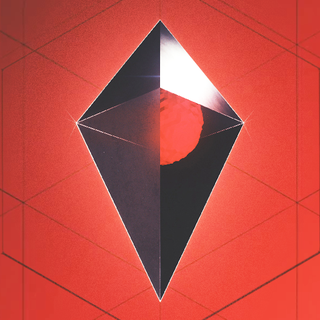I don’t know what it says about me that I instantly recognize that Salad Fingers poster.
dual_sport_dork 🐧🗡️
Progenitor of the Weird Knife Wednesday feature column. Is “column” the right word? Anyway, apparently I also coined the Very Specific Object nomenclature now sporadically used in the 3D printing community. Yeah, that was me. This must be how Cory Doctorow feels all the time these days.
- 5 Posts
- 493 Comments
I sort of get it, but also “Half Life game ends with G Man time-freeze BS and a random abrupt cliffhanger that will not be resolved for years, if ever” isn’t exactly an unexpected outcome for anyone who’s interested in Half Life.
You may as well just watch a Youtube LP of Alyx anyway, since I imagine the majority of players do not have the equipment to play it themselves.
If the cliffhanger at the end of HL:2 Episode 2 annoyed you, the one at the end of Half Life: Alyx will annoy you even more because it not only returns to that moment but the G Man uses reality warping shenanigans to overwrite what happens in it, and replaces it with a different cliffhanger.
Son of a bitch and his unforeseen consequences, indeed.
On the bright side, this also circumvents the need for the original events of Half Life 3 to happen, since Valve has consistently said they were not willing to make it as it was originally drafted (especially now since Marc Laidlaw leaked/released the entire plot online). So now I guess they’re free to do something new with the story direction… Whatever that might be.

 49·8 days ago
49·8 days agoNot only that, but given that heating up volumes of water is basically the metric around which energy units and calculations are all derived, it’s easy to determine just how much energy.
Assuming an inlet temperature of a fairly optimistic 60°F or 15.56°C, it takes 12,934,470.48 joules to heat one US gallon of water to 500°C. Or if you prefer, possibly because you’re an American used to reading your electricity bill, 3.59 kWh to heat that gallon. Just one.
The EPA estimates that just in the US alone, wastewater plants treat 34 billion, with a B, gallons of water per day. No need to get out your calculator, that’s 122,060,000,000 kWh or if you prefer, just under 11.5 times the existing average daily power production of the entire country (10,640,243 MWh, if you’re wondering).
So, uh. Yeah. Probably not feasible.

 6·8 days ago
6·8 days agoAnd I also have a VR headset and VirtualBoyGo if I really feel like giving myself an authentic headache.

 11·8 days ago
11·8 days agoPeople also lost their shit over the PSP Go being digital distro only in a physical handheld console, and lost their shit so hard that Sony of all people walked it back with the Vita and built cartridges back into the spec. (And it became retroactively excusable once it was discovered how easily the PSP/Go could be hacked, and suddenly the Go was the desirable model for emulation and, er, backups. But that’s neither here nor there. Under its intended use, within its original lifespan, it was a stupid idea.)
If you ask me the entire point of a game console is to be a dedicated platform that you stick games in and it always works. If I wanted to fuck around with downloadable only content, games that are only keycodes, patches, day 1 DLC, always-online DRM, and the inevitable day the servers all go dark I’d just game on PC. Which, come to think of it, in these modern times is exactly what I do anyway. I have game systems dating all the way back to the Atari VCS which I can to this very day if I feel like it slap a cartridge or disk in and they play. To me, there is immense value in that. Without that, there’s really no need for the “real hardware experience” for me. I can just emulate if any title comes out that I truly give enough of a shit about that I must play it. Anything else is just selling you a rental, but at full price. I find that immensely distasteful.
So I have zero interest in the Switch 2, and thus it will be the first Nintendo console in history I don’t own, or aim to own (I do not have a Virtual Boy, much to my shame and embarrassment.) I imagine I’m not the only one. Nintendo’s been trying very hard to lose the plot, which for a company as profitable and famous as they are takes a real concerted effort. Congratulations to them, then, if that’s the goal – What we are witnessing here is very possibly the beginning of the end for big N.
Your video player “can” account for latency if you configure it correctly which I imagine the majority of people don’t do, and simply put up with it. Ditto with your music playback always lagging 1-2 seconds behind your control inputs. I have never used a media player on any platform that automatically figured out audio latency. Maybe the iDevices do if you pair them with Airpods, I don’t know; I don’t own anything Apple and I never will.
It also matters for music production, and makes life a lot more pleasant for audio/video editing. Plus, latency is just annoying in any setting.

 26·15 days ago
26·15 days agoAnd also no latency. Even expensive Bluetooth headphones and earbuds have crap latency. The systems that don’t are either proprietary and not widely supported (e.g. aptX) or expensive 'phones-and-dongle arrangements that must always travel in a pair and still don’t compete on latency with a pair of dollar store earbuds.
We’d love to, but manufacturers keep trying to force them down our throats. And when we express a different prererence or use case a bunch of trolls feel the need to pop out of the woodwork and tell us that no, we’re actually wrong and our use cases don’t actually exist.
How about you all don’t worry about what headphones other people are using?

 21·15 days ago
21·15 days agoZoomer Parker will not lug around an SLR camera in the next reboot; he’ll simply be a drone operator.

 4·15 days ago
4·15 days agoI have. My former bank disallowed reusing any of your previous passwords, and also did “clever” things like flagging you for using sequences of characters from your old passwords as well.
All provisos that revealed that they were storing passwords (including old passwords) in plain text, because there’s no way they’d be able to make those determinations if they were irreversibly hashing passwords correctly.
TL;DR: They’re no longer my bank.

 201·15 days ago
201·15 days agoMore likely it’s happening because the password change field silently truncates your input and the login field doesn’t, or vise-versa, because whoever designed the web page or system is stupid.

 29·16 days ago
29·16 days agoWhen they say “repopulate,” what they really mean is “reproduce faster than the brown people.” As usual it’s racism all the way down.

 2·18 days ago
2·18 days agoYes, and possibly also so they can’t get sued or have to license the Michelin name somehow if they can point to the fact that their stars are clearly not the same thing.

 35·20 days ago
35·20 days agoBased on the popular trope of Hispanic guys hanging around outside of Home Depot (or other American big box hardware stores) every morning looking to get picked up as day laborers.

 25·20 days ago
25·20 days agoWhich everyone always gets wrong, since there’s apparently a deeply ingrained cultural misconception that a restaurant can achieve up to five Michelin stars. Even Ratatouille got this wrong (although possibly deliberately), with the implication that Gusteau’s was a “five” star restaurant, its downgrading to four is the event that caused Gusteau himself to lose his will to live, and afterwards it was downgraded again to three. Which is already the maximum. Either Gusteau’s was just originally so good it broke the scale, or it was the sole and singular haute cuisine establishment in all of Paris that was not ranked by Michelin for some reason.
The various hotel ranking schemes have a one-to-five stars scale, though, which is probably what most people conflate the Michelin stars with. Unlike the Michelin ratings there is no central or consistent authority on hotel rankings so they’re pretty arbitrary to begin with and to a certain degree just a marketing ploy.

 10·20 days ago
10·20 days agoPlanets have at most four “biomes,” but how much you think the differences between these actually counts is really up for debate. They have:
- Their main land mass
- A “barren” variant which appears in blotches has different rocks and little/no plant life and spawns fewer animals
- An underwater biome, if that planet has water
- The underground/cave biome
That’s it.
Furthermore, the cave biomes of all planets are virtually identical to each other with the visually interchangeable stalactites and stalagmites, the same types of bulb plants, identical hazardous flora, and hexagonal rock pillars. This is so even where it makes absolutely no sense, i.e. on the various specialty “anomalous” planets which have implied artificial or non-organic surfaces or even sterile ones, the caves are all the same. Including presumably organic mushrooms and bulb plants. The climate, color, plant content, surface terrain etc. of a planet has no bearing on what its caves look like other than their size and frequency.
To answer your question, all you need is the above. The rest of my observations got rather long. Here they are:
Planets can have different terrain generation algorithms that will broadly determine the shape and height of their mountains, and one optional geographic feature (like mesas, or big land spikes randomly but fairly uniformly distributed around the surface) but these will not change appreciably with your location on a given planet except possibly the prevalence of land vs. ocean basins. You can read more about this here.
Biome type, terrain archetype, and the planet’s terrain feature vary only from planet to planet, and apply to each planet as a whole. They do not vary within the same planet. I’m using “biome” here in how the game defines it, i.e. as that planet’s particular theme: Ice planets are ice all over their whole surface. Toxic planets are toxic all over their entire surface. Desert planets are the same desert all over their entire surface. Etc.
There is no difference in climate at different latitudes. Waterbound planets may have differing proportions of water to land masses in different locations, which is visible from space. Creatures (especially aquatic ones) can sometimes be flagged to be found “mainly in the North” or “mainly in the South,” but otherwise the distribution of plants, rocks, and animals is statistically uniform all over the planet’s surface regardless of location. The only differentiator is whether they spawn on the ground, in the water, in the air, or in caves – and that they spawn a lot less on the barren patches.
You will notice in fact that your location pin on your Discoveries tab doesn’t even bother to track your longitude, just your latitude. I.e. planets don’t even truly have an “east” or “west” in any way that impacts gameplay whatsoever. This also means you will never see a creature flagged “found mainly in the East/West,” because as far as the game is concerned there is actually no such thing.
Yes, all planets have the same gravitational constant except airless worlds, which have moonlike gravity. This is regardless of their diameter or implied mass. (Airless worlds also lack flora and fauna except cave flora and hazardous plants. Because that makes sense.)
Yes, all planets always have the same day/night cycle and are always implied to be perfectly vertically aligned relative to their orbits. The length of day and night is always the same for all planets, regardless of size or their implied rotational speed. They are furthermore never tidally locked to anything (nor are their moons) nor have a tilted rotational axis, and will still exhibit their day/night cycle even if they are e.g. completely obscured from their host star(s) by their parent planet (in the case of moons) or a gas giant planet, and in that sense will behave as if you are standing on their equator regardless of your latitude. You can race the dusk line around a planet in your ship and indeed even outrun it, and take off at night landing in the day or vise versa, but this is an illusion. As soon as you make landfall you’re bound to the same day cycle clock regardless of what the planet looks like from space.
In this way NMS is very rudimentary. It’s easy to complain about superficially but even as unrealistic as it is there’s really no gameplay detriment. And making its orbital and planetary mechanics truly or even partially realistic would actually be quite annoying and force you to think about things a lot more than you currently do in some specific edge cases, which would be silly for not much benefit. Would it be cool if all planets of the same type weren’t a single climate stereotype? Sure. When you’re going to visit multiple tens of different planets in a single play session, does that actually matter? Probably not.
For another example, there is also universal gravity in deep space. Taken from your player’s viewpoint, the bottom of your screen is “down” when you’re standing upright on a surface, regardless of logic. Don’t believe me? Warp your freighter to open space far away from any planet, stand on the exterior deck of any of your frigates, and then jump off.
I’m pretty sure the way that planet surfaces are stored in the game engine is toroidal rather than spherical, i.e. there is no true North or South pole on any given planet’s surface, and the surface is actually a rectangle with the edges wrapped around, that’s got the illusion of being mapped to a sphere applied to it. (This is rather akin to how it works in Minecraft, for example, where if you stand at a high enough elevation the engine renders the horizon as if it is curved to imply that the world is spherical, but it is in fact rectangular and geometrically flat.) If you walk to the spot that should North pole on any planet your compass should act like one does on Earth, i.e. all directions are South. But that’s not how it works in game. You can line the compass in your HUD up to North and walk all the way “around” the planet if you have enough time on your hands until you wind up back where you started, but your compass will remain showing North the entire time. On a sphere, this would be impossible.
Your location on a planet can be expressed in a two dimensional X and Y coordinate which is even visible, e.g. on the screens in your ship, but you can observe that while flying around an ostensibly spherical planet the lines of both latitude and longitude appear to be perfectly straight and neither of them are curved or convergent at any point which is also impossible on a spherical surface.
Etc.

 2·20 days ago
2·20 days agoThe layout of all normal space stations is the same, but the props scattered around them are subtly different based on I believe the economy of the system as well as the dominant species there. Other than those details they are indeed functionally identical. Calling them all “different” from each other because of this is a huge stretch.
Station interiors used to be different than they are now, but they were still all the same. The floor plan of the stations in abandoned systems is the same as what the old stations looked like. The pirate stations are by and large based on this design as well. The addition of various additional vendors including the maps trader, starship fabricator, scrap merchant, etc. necessitated changing the station floor plans.
- All normal stations have the same layout.
- All pirate stations have the same layout as each other.
- All abandoned stations have the same layout as each other, which is the old station style.
- The Space Anomaly is always the same.
- Atlas Stations are always the same, with the only differences being the semi-randomlized locations of the “warts” and what resources are on offer at the pedestals near the interface.
So tl;dr: No. Other than trivial minutiae, the same type of station is the same as all the others of its type.

 8·21 days ago
8·21 days agoI’ll bet you it does, but you’ll need to put a new battery in it.

Still I have one (1) in a stairwell in my house. So far I’ve left it alone, partially because it also has a stupid piece of stair molding blocking part of its cover plate but mostly because I have never in all my years found any reason to plug anything in there.
Somebody probably originally intended it to be for a vacuum cleaner or something, but even the corded ones I’ve owned have had cords more than long enough to reach both ends of the stairs from a selection of other nearby, non-stupid outlets.